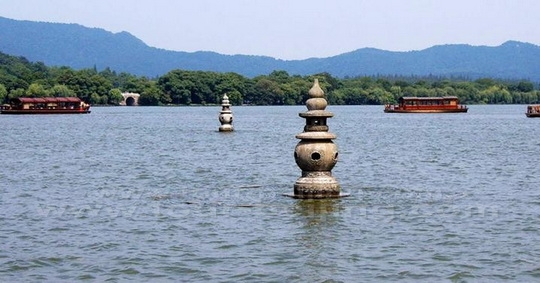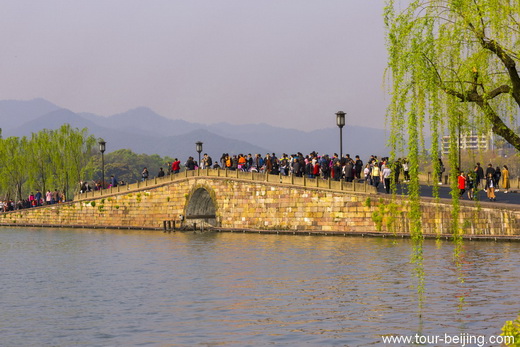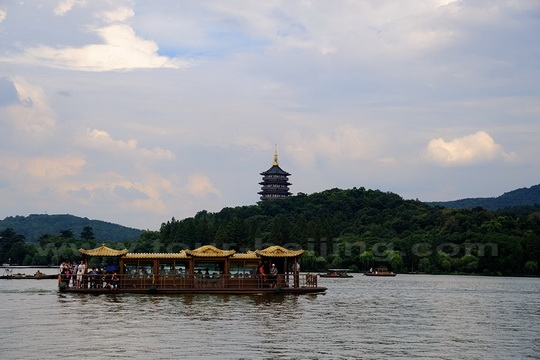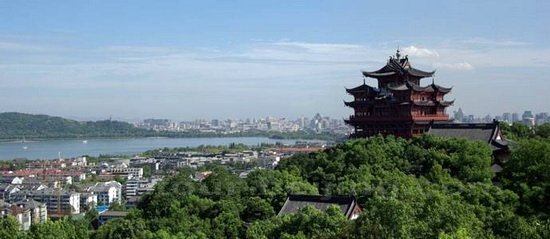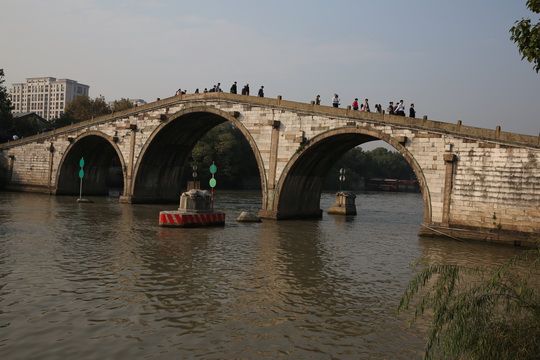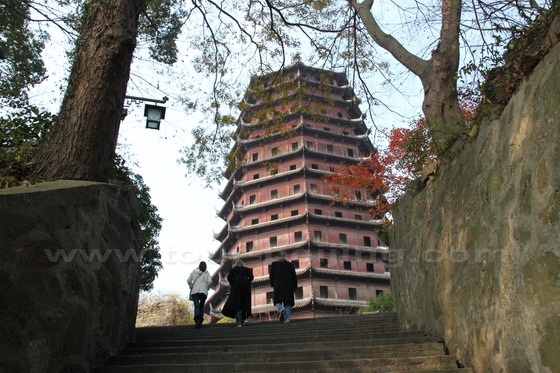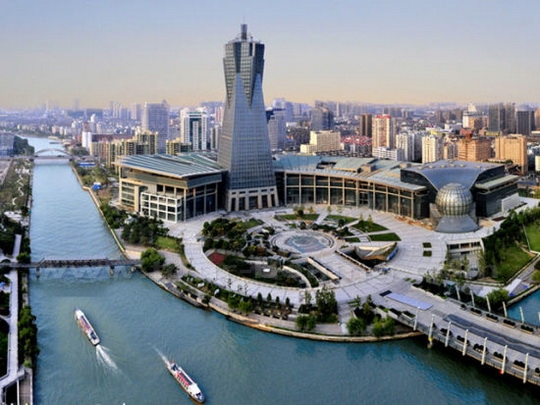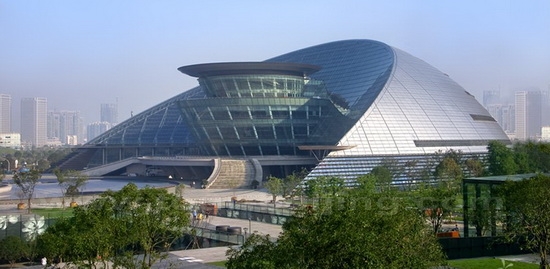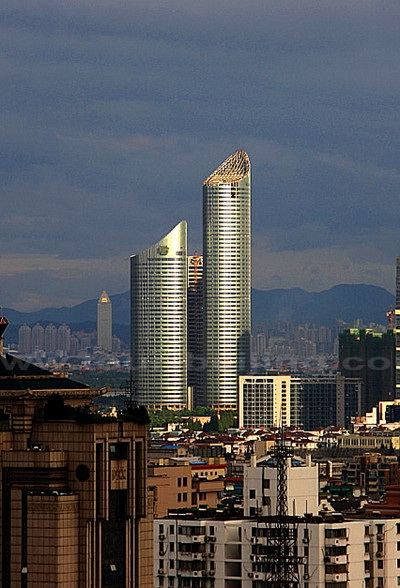A city’s landmark isn’t necessarily a high building, however it should carry on the city’s history and culture, or features its urban development as well. It determines the city’s character and dominates people’s psyche. It helps us better understand the city
So what are Hangzhou’s top iconic landmarks? Hangzhou is one of the eight great ancient capitals in China (Southern Song Dynasty 1127–1279). It has long been famous for its picturesque West Lake ( UNESCO World Cultural Heritage Site 2011 ).
The Grand Canal (UNESCO World Cultural Heritage 2014) is a uncovered gem in Hangzhou reminding people of its glorious past in the Grand Canal age. Hangzhou is also a fast-developing megacity with its urban gravity moving beyond Qiantang River. On the other side of the river, skyscrapers, supertall buildings are popping up, comprising offices, hotels, conference rooms, observation decks, and ground-floor shopping malls and more, a fascinating brand new urban zone of Hangzhou. Hangzhou is now in a historical transition from the traditional West Lake times to the Qiantang River times.
We select the Top 10 Landmarks for your Hangzhou tour that bring us closer to Hangzhou’s West Lake, Grand Canal, and its glamorous past and current fast development. Among the 10 selected landmarks, four are related to the West Lake, two to the Grand Canal, two to the ancient Hangzhou and two to the contemporary Hangzhou.
1. The Three Stone Pagodas of the Three Pools Mirroring the Moon 三潭印月的三座石塔
The Three Pools Mirroring the Moon is the largest island on the West Lake. Its name comes from the three magic stone pagodas south of the island. The stone pagodas were originally built in 1089 Song Dynasty ( 960 – 1279 ). The three stone pagodas stand on the three deep-water pools in an equilateral triangle on the West Lake.
For more information on the island of the Three Pools Mirroring the Moon, check out my another article:
Stroll around Three Ponds Mirroring the Moon.
In Chinese Mid-Autumn Festival ( Moon Cake Day ), candles are lit inside the round holes of each pagoda, creating the mixed splendor of candle light, moonlight and lake light on the three-pool area in the lake, hence the name of the Three Pools Mirroring the Moon.
The three stone pagodas of the Three Pools Mirroring the Moon is the landmark of the West Lake and the symbol of Hangzhou. The three stone pagodas are printed on the back of the one yuan paper banknote of RMB, making the Three Stone Pagodas more famous.
2. The Broken Bridge 断桥
The Broken Bridge connects the eastern end of Bai Causeway with the mainland of the city. It is one of the two stone arch bridges on the pedestrian only scenic causeway planted with willow and peach trees linking Solitary Island and the shore.
Its name “Broken Bridge” comes from so-called ” Remnant Snow on the Broken Bridge”, a rarely seen view in winter. In winter when you are lucky enough to see Hangzhou in snow, the snow on the sunny side of the bridge melts first, while the snow on the shady side still lingers. Looked at a distance or from a nearby hill, the bridge appears to be broken, hence “the Remnant Snow on the Broken Bridge” in winter, one of the ten most famous traditional scenic spots in Hangzhou.
The Broken Bridge’s fame is also linked with a famous Chinese love story – White Snake Legend, a Chinese version of Romeo and Julian. Strolling on the scenic Broken Bridge is now a must for the West Lake visitors. The Broken Bridge is an important landmark of the West Lake and Hangzhou as well.
The Broken Bridge and the Bai Causeway were originally built in Tang Dynasty by Bai Juyi (772-846), one of the famous poet in Tang Dynasty, a great governor of Hangzhou who had made great contribution to the prosperity of Hangzhou and the beauty of the West Lake. The present Broken Bridge was rebuilt in 1941.
3. Leifeng Pagoda 雷峰塔
As one of the landmarks in Hangzhou, Leifeng Pagoda is a perfect place for having a panoramic view of the West Lake. Feifeng Pagoda is situated on the Sunset Hill on the south of the West Lake. First built in 975 AD, it was made of brick and wood with its base built out of bricks.
During the Ming dynasty (1368 – 1644), Japanese pirates burned down Leifeng Pagoda’s wooden structure, leaving only the brick skeleton for suspecting the pagoda contained weapons. On the afternoon of September 25, 1924, the pagoda finally collapsed due to disrepair.
Hangzhou City and Zhejiang Province decided to rebuild Leifeng pagoda on the ruined base in 1999. The new tower opened on 25 October 2002. It has four sightseeing elevators, and modern facilities including air conditioners in the Pagoda, TV and speakers.
An huge iron and steel structure now stands on the original base of the pagoda which has been kept in good condition. At the entrance to the pagoda there is one autonomous escalator to take visitors to up to the pagoda’s base. How to Visit Leifeng Pagoda.
4. Baochu Pagoda 保俶塔
The West Lake is surrounded by the hills on its three sides – North Hill, South Hill and West Hill with its east water edge bordering Hangzhou city’s downtown area. Baoshi Shan or Precious Stone Hill is an important part of the North Hill and located on the north bank of the West Lake.
There are numerous paths lead up to the hill either from the lakeside, or from its north hillside. Baoshi Shan is dotted with unique caves, Buddhist and Taoist shrines. The slender Baochu Pagoda rises atop Precious Stone Hill where you can have a panoramic view of West Lake and the city as a whole, one of the two best West Lake viewing places with the other being Leifeng Pagoda on the southern water edge of the West Lake.
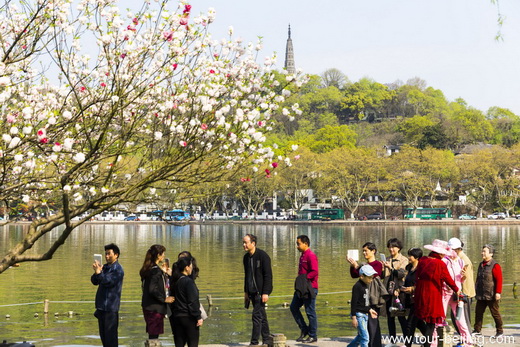
It was originally built with nine stories in 963 and reconstructed in 1933 with seven stores. It is built of brick and stone without internal staircase. The Baochu Pagoda is the essential landmark on the northern lake shore of the West Lake.
5. Chenghuang Pavilion atop Wushan 吴山城隍阁
Wushan, ( Mountain Wu ), is the eastern tail of the West Lake’s South Hill protruding into the downtown area of Hangzhou. The busy pedestrian street known as Hefang Street is located below its north slope. Wushan is 94 meters high, replete with beautiful caves, clear spring, weird rocks and elegant landscapes. On its hilltop, you can have a panoramic view of Hangzhou’s rivers, mountains, lakes and the city itself, a bid draw around the West Lake.
Wushan is often called Chenghuang Hill ( City God Hill ) because there used to a city god temple on the hilltop. Today an iconic pavilion was built on the mountain top. The pavilion is known as Chenghuang Pavilion ( City God Pavilion ). It is 41.6 meters high with an area of 3789 square meters with seven stories. It is constructed in the styles of Song and Yuan dynasties with upturned eaves and cornices. It looks like an phoenix spreading their wings in the air, not paled by the other three famous pavilions in Jiangnan – Yellow Crane Pavilion, Yueyuan Pavilion and Tehuang Pavilion.
6. Gongchen Bridge 拱宸桥
The Grand Canal Hangzhou is the final section of the Grand Canal ( China ), also known as Beijing-Hangzhou (Jinghang) Grand Canal. It is oft-lauded as the earliest and longest artificial waterway in the world starting from Beijing in the north and ending at Hangzhou in the south for a total length of 1776 km.
The West Lake is well known for its elite culture – the upper-class intellectuals and government officials lived by the lake, cruised on the lake, wrote about the lake and painted the lake, hence of the glorified West Lake. By contrast, the Grand Canal was all about the ordinary people – how the low class people and vendors lived and worked along the canal. The two, both the intellectuals and labors create part of the splendid culture in Hangzhou.
Check out my another article How to Visit Grand Canal Hangzhou for more information.
Gongchen Bridge is the landmark of the Grand Canal Hangzhou. “Gongchen” literally means “respect the emperor”. In the Qing Dynasty (1644-1911), Emperor Kangxi (1654-1722) and Emperor Qianlong (1711-1799) traveled six times respectively along the Grand Canal from Beijing to Hangzhou for the inspection and sightseeing. Gongchen Bridge stood there respecting and welcoming the emperor, hence the name. East of Gongchen Bridge is the Grand Canal Cultural Square where the Beijing-Hangzhou Grand Canal Museum is located.
7. Liuhe Pagoda (Six Harmonious Pagoda ) 六和塔
Liuhe Pagoda is a must see sight on your first time trip to Hangzhou. “Liuhe” literally means the harmony of east, west, south, north, heaven and earth, the six Buddhist ordinances. So Liuhe Pagoda is often translated in English as “Six Harmonies Pagoda”. How to Visit Liuhe Pagoda.
Though it is one of the six ancient cities in China, Hangzhou doesn’t have much authentic relics left from ancient time. Many of the historic sites or ancient buildings are replicas and reproductions with their original things destroyed during the 10-year cultural revolution (1966-1976) in China. Fortunately Liuhe Pagoda has surviced a number of natural and man-made disasters, making it more valuable and worth visiting.
The original Liuhe Pagoda was built in 970AD aimed at controlling the tidal bore of Qiantang River and serving as a lighthouse as well. However, the pagoda was completely destroyed during warfare in the year 1121.
Liuhe Pagoda itself is composed of parts: the 7-storey inner stone pagoda and 13-storey outer wooden pagoda. The inner stone pagoda of the present Liuhe Pagoda is proved to be the original one dating back to the Southern Song Dynasty (1127–1279). The outer wooden structure was built in the Qing Dynasty (1368 – 1644). The pagoda is octagonal in shape and about meters in height.
8. Zhejiang Global Center at West Lake Cultural Square 西湖文化广场的浙江环球中心
The West Lake Cultural Square was built in 2002 with an area of 13.3 hectares. The whole design is based on the architectural backgrounds of the West Lake Culture, Grand Canal Culture and Ancient Pagoda Culture. It is located in the city center of Hangzhou, 2km to the northeast of the West Lake.
The square is dominated by the 170-meter high Zhengjiang Global Center with 41 floors. The construction of the skyscraper was completed in 2005. The square is designed for leisure, entertainment, science and performing arts exhibitions. It also accommodates Zhejiang Natural History Museum and Zhejiang Museum of Science and Technology.
9. Hangzhou Grand Theatre 杭州大剧院
Hangzhou Grand Theare is located on the south bank of Qiantang River ( No.66 Zhi Jiang Road (East), Qian Jiang Xin Cheng District). it was designed by the internationally known Canadian architect Carlos Ott.
Hangzhou Grand Theatre occupies an area of 100,000 square meters with a total construction area of 55,000 square meters. It comprises an opera house, a concert hall, a multi function hall, an open air stage and a culture square.
Hangzhou Grand Theatre is famous for its unique architecture, a new landmark in Hangzhou. The silky titanium roof symbolizes the pearl; the slant surface made of the double curved glass curtain wall represents the moon; a pool of over 6000 square meters in front of Hangzhou Grand Theatre stands for the beautiful West Lake.
10. Zhejiang Fortune Financial Center 浙江财富金融中心
Zhejiang Fortune Financial Center is located in the CBD of Qianjiang New District, Hangzhou. It is a new iconic landmark in Hangzhou. Currently it is the highest building in Hangzhou.
It comprises two supertall buildings – the West Tower 258 meters high with 55 floors and the East Tower 188 meters high with 37 floors. Each tower has an iron structure pagoda frame atop the tower. From the observation decks of the two towers, visitors can have a clear panoramic view of the spectacular city and the picturesque Qiantang River.
Tip: Hassle-free Hangzhou Guided Tours
If you don’t want to go the do-it-yourself route and prefer the hassle-free escorted tours, here are some options for Hangzhou Guided Tours:
Hangzhou Tour
Hangzhou 4-Day Tour Package
Hangzhou 3-Day Tour Package
Hangzhou Private Tour
Hangzhou Theme Tour
Hangzhou Side Trips
Hangzhou Car Rental with Driver
Further Readings
Top 10 Attractions in Hangzhou
Top 10 Photography Spots in Hangzhou
Night View of West Lake in Hangzhou
The Best hiking trail in Hangzhou
The best time to visit Hangzhou
Hangzhou East Railway Station
Hangzhou Airport Arrival Hall
How to Visit Feilai Peak Grottoes in Hangzhou
Where to stay in Hangzhou
Hangzhou Bicycle Hire
Wushan Night Market in Hangzhou
Pedestrian Streets in Hangzhou
Hangzhou’s Best Bars & Nightclubs
Best Way to Visit Hangzhou from Shanghai
How to Visit Grand Canal Hangzhou
How to Visit Xiling Seal Engravers’ Society
How to Visit Liuhe Pagoda
Hangzhou Tea Plantation
How to Visit Leifeng Pagoda
How to visit Hupao Spring (Tiger Spring) Hangzhou
How to Visit Yellow Dragon Cave in Hangzhou
The Best Place to View Sunrise over West Lake Hangzhou
Any question, just drop a line.






